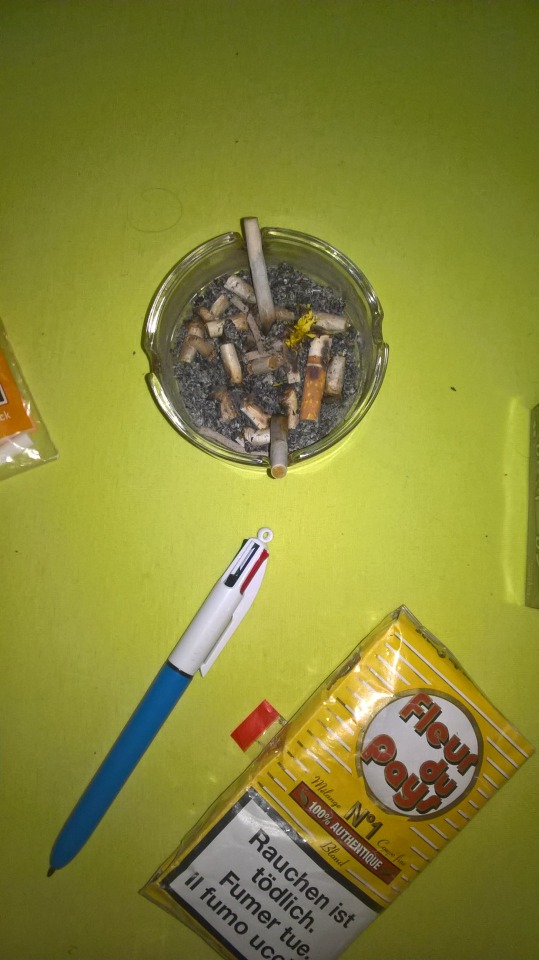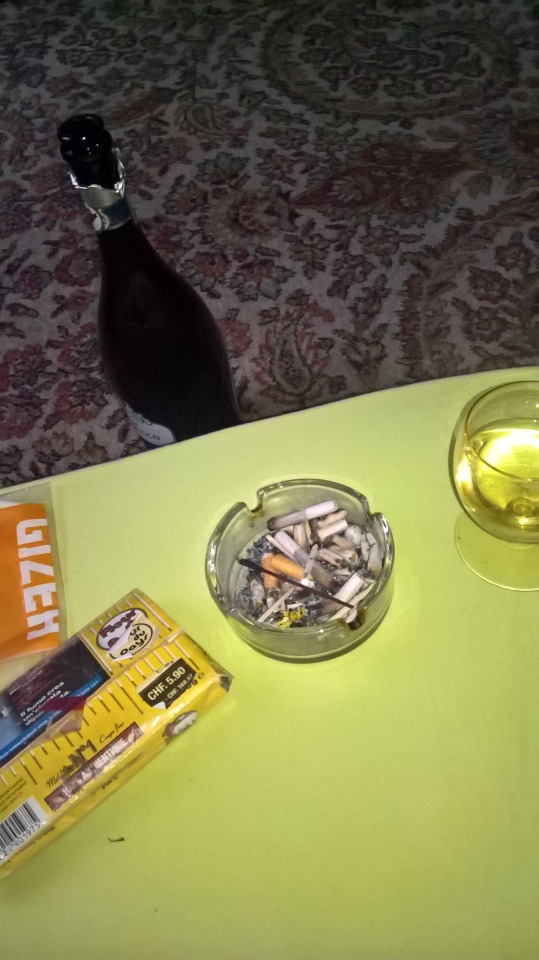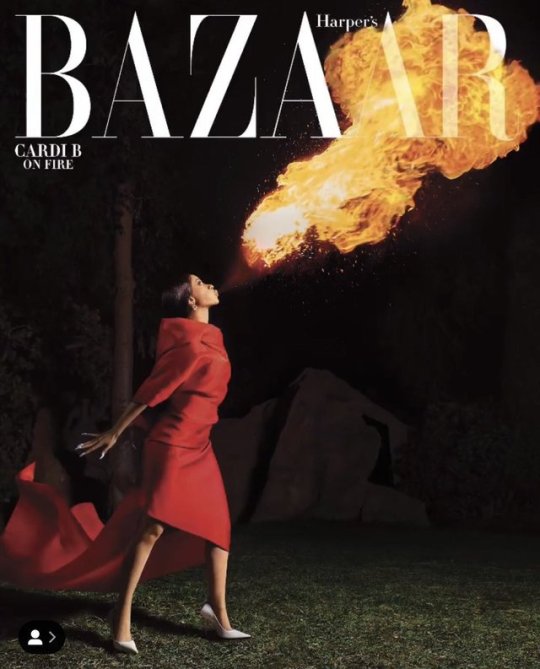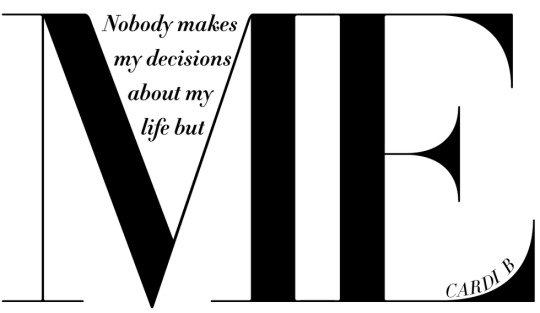#high life kulture
Text
Passion Action Noble Intention
#blaze aliaz#aliaz ent#aliaz entertainment#muzik over money#eye love mom#hlk#high life kulture#tom hardy
4 notes
·
View notes
Text
TVORNICA KULTURE 10/11/2023
It's still hard for me to process what really happened yesterday. At this point it has been the best concert of my life.
I really thought nothing could beat Tavastia because Tavastia was and always will my first Joker Out concert and the first concert it's always special, right? I was so wrong.
What can I say? The guys were so happy. They had so much energy and you could tell they (Bojan especially) were having a great time in first place. It was fucking great to see them wearing Stožice outfits with my own eyes and to listen finally all the missing songs that were not played on nordic tour. Omamljeno Telo and Padam, I'm talking to you.
Jan proved once again he's one hell of a musician. When he plays he enters in his own world and he transforms. He's crazy, yet sexy, yet so sure of himself because he knows what he's doing. There was a moment where all of them went in the back to leave room for him and one of his solos and my mouth was wide open all the time.
Bojan interacted a lot with us (while both talking and singing) and it was so fun to me because he spoke Croatian the whole time and I was like "whatever you say, darling".
A Sem ti povedal killed me in its entirety because at some point I realised I stopped understanding Bojan words and I realised he had switched to Nisam ti još priznao. He sang it both in Slovenian and Serbian. People died (me). Then came of course our beloved Jance moment and when I saw Jan giving Nace a little friendly puch on his belly and then letting his head against Nace's chest my heart skipped a heartbeat. It felt so intimate.
Last but not least, a special thank goes to @meta1 . We were in touch since maybe a couple of weeks and she agreed to meet me and my girlfriend and we spent a lovely evening together the day before the concert, enjoying Zagreb by night. We even managed to catch before the concert started despite being organised differently (she saw us from the sixth row, we were in the front) and it was so funny. I hope to see you again in the future, you made it twice special.💕
Now, for those who read all of this enjoy my glory moment where Nace saw my sign (Nace, if you love turtles please give me five! With a pic of my turtle on it) and I got a high five plus a pick WITH A TURTLE ON IT.
32 notes
·
View notes
Text























early stages of decay: in pieces by night
03/16/2018 - 04/14/2018
[blick aus dem augenwinkel auf die kultur touristen beim nächtlichen museumsgang / auf die sonntäglich demonstrierenden / nicht viel mehr als eine störung im alltag / eine minderung der gewohnten ordnung / ein fuck off aus dem fenster shouten und in das display hinein / höchstens auf die strasse gehen um 1 auto anzuzünden oder vor die polizei station zu urinieren / gelangweilt durch insta storys sliden sporadisch getriggert gecravet abgeturnt / in den gewohnten 4 wänden / ebenjene anstarren und warten auf das gewohnte high / inmitten des üblichen konsum kosmos dieser einen hood die nicht mehr und nicht weniger ist als eine einkaufsstrasse / im schatten und den grauzonen der sandsteinstadt / dieses eine millennial nihilism mindset / wenn die grenzen zwischen real life und internet und bad trip unklar geworden sind / und gleichgültig / märz 2018]
0 notes
Photo

Famous german artist SEAK Claus Winkler: I don’t know what to write. Laying on my couch. Full from the pig gulash, brown sauce with rice, some vegetables. had tea. Wdr 4 Kultur Radio some classic opera song. Digesting. watched Twitter. Knive atxxxks from pocs migrants on native Germans. A group poc migrant children torturing bio native german girl ( child). A video, where there filming the action. The amount from events like this getting everyday thicker. A steady wave. A knive, blade, new normal. In schools, in sport reha groups Germans are the minority, and treated like that. Everybody successful enough native German with in there summer/ winter residency’s in Spain, x, in a beautiful country. If you are a high networth individual, invest in my art, to proof yourself, and the world that you don’t give a …. That your life is beautiful. My art masks what is happening in the western world. It gives you escapism beyond knowing that it is escapism. It will make you sleep. I mean this with in good way. My green lights everything the current political green left wing party’s are doing. Turning a blind eye on migrant crime, anti male, pro male femininity, pro men are citizens second class, pro the rich richer, poor get poorer, that it isn’t ok to be Caucasian, that old white male persons are the problem. My art green lights all that, the mainstream matrix the official agenda is telling/ dictating. Although feminism, etc. My art gives you the perfect camouflage shield. The mirror. Just pace the mainstream matrix, with my art, and live like you have always lived unbothered by the lefties, the woke, the have nots. My art shields your subconscious, and your Public persona by not resisting. It says yes to every thing. Feel free checking out the blog on website. Feel free sharing, liking my work. Thank you #SEAK #ClausWinkler #SEAKClausWinkler #Workinprogess #paintedfromallsides #richkidsofinstagram #paintings #Worksoncanvas #rkoidaily #rkoi #bildendeKunst #contemporaryart #gallery #newcontemporary #richkids #abstractlandscape #scifiart #spaceships #superyacht #Futurism #uhnw #highnetworthindividuals #contemporaryartist #malerei #malereiabstrakt #abstrakteKunst (hier: Alpnachstad, Nidwalden, Switzerland) https://www.instagram.com/p/CqDXcIjodUB/?igshid=NGJjMDIxMWI=
#seak#clauswinkler#seakclauswinkler#workinprogess#paintedfromallsides#richkidsofinstagram#paintings#worksoncanvas#rkoidaily#rkoi#bildendekunst#contemporaryart#gallery#newcontemporary#richkids#abstractlandscape#scifiart#spaceships#superyacht#futurism#uhnw#highnetworthindividuals#contemporaryartist#malerei#malereiabstrakt#abstraktekunst
0 notes
Text
🚨HLK SHOP NOW OPEN 🚨
NEW DROPS @ 🔻🔻🔻
#hlk#highlifekulture#high life kulture#aliaz ent#aliaz entertainment#topshelf#zaza#Sacramento#city of trees
3 notes
·
View notes
Text
The Basics of Kemetic Philosophy (without the appropriated shit from Judaism)
I'm starting a series on Kemetic philosophy because a lot of my readings on it have included things like Kabbalah (Kabala, Kabbala, Qabala, etc.) which is directly appropriated from Judaism, and definitely would not have been included in ancient Kemetic philosophy.
This series relies heavily on the following books/independent publications (this continues to be updated as the series continues):
The Instruction of Ptah-Hotep and the Instruction of Ka'Gemni: The Oldest Books in the World translated by John Murray
Teachings of Ptahhotep
Maat: The 11 Laws of God by Ra Un Nefer Amen (somewhat, this book literally has the Kabbalistic tree of life on its' cover so I don't take a lot from it--it's really just a good jumping-off point because it covers so much)
Maat: The Moral Idea in Ancient Egypt by Maulana Karenga
The Literature of Ancient Egypt: An Anthology of Stories, Instructions, and Poetry edited with an introduction by William Kelly Simpson. Authors include Robert K. Ritner, Vincent A. Tobin, and Edward F. Wente.
I Am Because We Are: Readings in Africana Philosophy by Fred Lee Hord, Mzee Lasana Okpara, and Johnathan Scott Lee.
Ancient Egyptian Literature: Volume I: The Old and Middle Kingdoms by Miriam Lichtheim (2006 Edition)
Current Research in Egyptology 2009: Proceedings of the Tenth Annual Symposium by Judith Corbelli, Daniel Baotright, and Claire Malleson
Old Kingdom, New Perspectives: Egyptian Art and Archaeology 2750-2150 BC by Nigel Strudwick and Helen Strudwick
Current Research in Egyptology 2010: Proceedings of the Eleventh Annual Symposium by Maarten Horn, Joost Kramer, Daniel Soliman, Nico Staring, Carina van den Hoven, and Lara Weiss
Current Research in Egyptology 2016: Proceedings of the Seventeenth Annual Symposium by Julia M. Chyla, Joanna Dêbowska-Ludwin, Karolina Rosińska-Balik, and Carl Walsh
Mathematics in Ancient Egypt: A Contextual History by Annette Imhausen
The Instruction of Amenemope: A Critical Edition and Commentary by James Roger Black
"The ancient Egyptian concept of Maat: Reflections on social justice and natural order" by R. James Ferguson
The Mind of Ancient Egypt: History and Meaning in the Time of the Pharaohs by Jan Assmann
Transformations of the Inner Self in Ancient Religions by Jan Assmann and Guy G. Stroumsa
Of God and Gods: Egypt, Israel, and the Rise of Monotheism by Jan Assmann
Death and Salvation in Ancient Egypt by Jan Assmann
Cultural Memory and Early Civilization: Writing, Remembrance, and Political Imagination by Jan Assmann
From Akhenaten to Moses: Ancient Egypt and Religious Change by Jan Assmann
Book of the Dead: Becoming God in Ancient Egypt edited by Foy Scalf with new object photography by Kevin Bryce Lowry
It also relies on the following journal articles/book chapters:
"A Modern Look at Ancient Wisdom: The Instruction of Ptahhotep Revisited" by Carole R. Fontaine in The Biblical Archaeologist Volume 44, No. 3
"The Teaching of Ptahhotep: The London Versions" by Alice Heyne in Current Research in Egyptology 2006: Proceedings of the Seventh Annual Symposium
"One Among Many: A Divine Call for Gender Equity" by Sandra Y Lewis in Phylon (1960-) Volume 55, No. 1 & 2.
"A Tale of Semantics and Suppressions: Reinterpreting Papyrus Mayer A and the So-called War of the High Priest during the Reign of Ramesses XI" by Kim Ridealgh in Studien zur Altägyptischen Kultur
EDITORIAL: African Philosophy as a radical critique" by Alena Rettová in Journal of African Cultural Studies Volume 28, No. 2
"Sanctuary Meret and the Royal Cult" by Miroslav Verner in Symposium zur Königsideologie / 7th Symposium on Egyptian Royal Ideology: Royal versus Divine Authority: Acquisition, Legitimization and Renewal of Power. Prague, June 26–28, 2013
"The Ogdoad and Divine Kingship in Dendara" by Filip Coppens and Jiří Janák in Symposium zur Königsideologie / 7th Symposium on Egyptian Royal Ideology: Royal versus Divine Authority: Acquisition, Legitimization and Renewal of Power. Prague, June 26–28, 2013
"The Egyptian Temple as a Place to House Collections (from the Old Kingdom to the Late Period) by Roberto A. Diaz Hernández in The Journal of Egyptian Archaeology Volume 103, No. 1
"Death and the Sun Temple: New Evidence for Private Mortuary Cults at Amarna" by Jacquelyn Williamson in The Journal of Egyptian Archaeology Volume 103, No. 1
"Mery-Maat, An Eighteenth Dynasty iry '3 pr pth From Memphis and His Hypothetical Family" by Rasha Metawi in The Journal of Egyptian Archaeology Volume 101, 2015
"A New Demotic Translation of (Excerpts of) A Chapter of The "Book of the Dead" by Joachim Friedrich Quack in The Journal of Egyptian Archaeology Volume 100, 2014
"The Shedshed of Wepwawet: An Artistic and Behavioural Interpretation" by Linda Evans in The Journal of Egyptian Archaeology Volume 97, 2011
"(De)queering Hatshepsut: Binary Bind in Archaeology of Egypt and Kingship Beyond the Corporeal" by Uroš Matić in Journal of Archaeological Method and Theory Volume 23, No. 3 "Binary Binds": Deconstructing and Gender Dichotomies in Archeological Practice.
"Egyptian Maat and Hesiodic Metis" by Christopher A. Faraone and Emily Teeter in Mnemosyne Volume 57 Fasc. 2
"Maat and Order in African Cosmology: A Conceptual Tool for Understanding Indigenous Knowledge" by Denise Martin in Journal of Black Studies Volume 38, No. 6
"Memphis and Thebes: Disaster and Renewal in Ancient Egyptian Consciousness" by Ogden Goelet in The Classical World Volume 97, No. 1
"A Radical Reconstruction of Resistance Strategies: Black Girls and Black Women Reclaiming Our Power Using Transdisciplinary Applied Social Justice, Ma'at, and Rites of Passage" by Menah Pratt-Clarke in Journal of African American Studies Volume 17, No. 1
"Emblems for the Afterlife" by Marley Brown in Archaeology Volume 71, No. 3
"Human and Divine: The King's Two Bodies and The Royal Paradigm in Fifth Dynasty Egypt" by Massimiliano Nuzzolo in Symposium zur ägyptischen Königsideologie/8th Symposium on Egyptian Royal Ideology: Constructing Authority. Prestige, Reputation and the Perception of Power in Egyptian Kingship. Budapest, May 12-14, 2016
"The Block and Its Decoration" by Josef Wegner in The Sun-shade Chapel of Meritaten from the House-of-Waenre of Akhenaten
"The African Rites of Passage and the Black Fraternity" by Ali D. Chambers in Journal of Black Studies Volume 47, No. 4
"Review: Translating Ma'at" by Stephen Quirke in The Journal of Egyptian Archaeology Volume 80, 1994
"Additions to the Egyptian Book of the Dead" by T. George Allen in Journal of Near Eastern Studies Volume 11, No. 3
"Types of Rubrics in the Egyptian Book of the Dead" by T. George Allen in Journal of the American Oriental Society Volume 56, No. 2
"Book of the Dead, Book of the Living: BD Spells as Temple Texts" by Alexandra Von Lieven in The Journal of Egyptian Archaeology Volume 98, 2012
"Fragments of the "Book of the Dead" on Linen and Papyrus" by Ricardo A. Caminos in The Journal of Egyptian Archaeology Volume 56, 1970
"Herodotus and the Egyptian Idea of Immortality" by Louis V. Z̆abkar in Journal of Near Eastern Studies Volume 22, No. 1
"Theban and Memphite Book of the Dead Traditions in the Late Period" by Malcolm Mosher Jr. in Journal of the American Research Center in Egypt Volume 29, 1992
"The Conception of the Soul and the Belief in Resurrection Among the Egyptians" by Paul Carus in The Monist Volume 14, No. 3
"It's About Time: Ancient Egyptian Cosmology" by Joanne Conman in Studien zur Altägyptischen Kultur Volume 31, 2003
"Egyptian Parallels for an Incident in Hesiod's Theogony and an Episode in the Kumarbi Myth" by Edmund S. Meltzer in Journal of Near Eastern Studies Volume 33, No. 1
"The Book of the Dead" by Geo. St. Clair in The Journal of Theological Studies Volume 6, No. 21
"The Egyptian "Book of the Two Ways"" by Wilhelm Bonacker in Imago Mundi Volume 7, 1950
"The Papyrus of Nes-min: An Egyptian Book of the Dead" by William H. Peck in Bulletin of the Detroit Institute of Arts Volume 74, No. 1/2
#kemeticism#kemetic#kemetism#kemet#history#ra#anubis#hathor#egypt#ancient egypt#gods of egypt#egyptian#egyption#judaism#culturalappropriation#culture#linguistics#language#cosmology#astrology#astronomy#philosophy#philosophical#basics of kemetic philosophy#resources#basics
327 notes
·
View notes
Text
Us, January 11
You can buy a copy of this issue for your very own at my eBay store: https://www.ebay.com/str/bradentonbooks
Cover: Diets That Work -- Julianne Hough

Page 2: Red Carpet -- Stars flex their right to bare leg in high-slit dresses -- Dua Lipa, Cynthia Erivo, Kristin Cavallari, Bebe Rexha, Sydney Sweeney
Page 3: Nicole Kidman, Jennifer Lopez, Ariel Winter, Hailey Bieber, Shay Mitchell
Page 4: Who Wore It Best? Olivia Wilde vs. Natalie Portman, Ashley Greene vs. Rachel Zoe
Page 6: Loose Talk -- Barack Obama joking about quarantining with his daughter Malia’s boyfriend, Pink revealing she broke her ankle and had a staph infection in addition to testing positive for coronavirus, Amal Clooney joking to husband George Clooney about the time and effort she put into her new 1000-page legal book, Miley Cyrus on feeling like she really made it after Cher slammed her 2013 VMAs performance, Anderson Cooper on being a dad to 8-month-old Wyatt
Page 8: Contents

Page 10: Hot Pics -- Blake Shelton and Gwen Stefani stopped at the music studio together in Pasadena
Page 11: Tiger Woods and son Charlie teamed up for the PNC Championship in Orlando, Vivica A. Fox during a tropical getaway in Tulum in Mexico, Joe Jonas and Sophie Turner took a stroll around the village and did some shopping in Mammoth Lakes, California
Page 12: Paris Hilton and Carter Reum in Sherman Oaks, Niecy Nash showed support for Regina King at a drive-in event for her film One Night in Miami in Malibu, Candice Swanepoel in a white bathing suit in Miami
Page 13: Duchess Camilla held a virtual royal engagement in London, Dancing With the Stars couple Sasha Farber and Emma Slater were in a great mood while out and about just days after becoming American citizens in L.A.
Page 14: Stars They’re Just Like Us -- Matt James hit the golf course in Jupiter in Florida, Renee Zellweger with an armload of packages in L.A., pregnant Emily Ratajkowski sipped on a beverage during a beach day in L.A.
Page 15: Molly Shannon hopped on her bike after withdrawing cash from the ATM in L.A., Sandra Lee taking out the trash at her new place just days after moving out of the N.Y. home she shared with her ex Gov. Andrew Cuomo in Malibu
Page 16: Seeing Double -- mom match with their mini-me’s -- Serena Williams and daughter Alexis Olympia Jr., Sutton Foster and daughter Emily, Gabrielle Union and daughter Kaavia, Kylie Jenner and daughter Stormi, Cardi B and daughter Kulture
Page 17: Kourtney Kardashian and daughter Penelope, Tamera Mowry-Housley and daughter Ariah, Eva Longoria and son Santiago, pregnant Kelly Rowland and son Titan
Page 18: Lady Gaga’s hair looks great in all hues
Page 20: Love Lives -- Lauren Burnham and Arie Luyendyk Jr. welcoming twins
Page 21: Kevin Jonas commemorated his 11th wedding anniversary with wife Danielle by sharing a photo of the two posing at the very spot they met, Chrishell Stause is defending her new romance with Keo Motsepe against all of the conspiracy theories, Jamie Lee Curtis and Christopher Guest’s love was built to last
Page 22: Just days after Shia LaBeouf was sued by his ex FKA Twigs for sexual battery and assault and emotional distress Shia was spotted making out with Margaret Qualley at LAX airport -- they’re very much in the honeymoon phase and Margaret’s totally smitten and she trusts he’s not the bad guy people say he is but Margaret’s loved ones are concerned about her new beau especially her mother Andie MacDowell who’s keeping an extremely close watch on the situation and if Shia so much puts a foot out of line she’ll come down on him like a ton of bricks -- Shia insists he’s a changed man and that he’ll never go back to those dark days ever again
Page 23: Life behind bars hasn’t been easy for Mossimo Giannulli and he’s having a rough time -- he’s in Covid-19-related protective custody and spending almost all of his time in his cell has been very mentally taxing but he’s doing his best to stay positive by reading, writing letters to his family and planning future business ventures and turning to prayer when he feels weak
* After relapsing in December John Mulaney is hoping to make 2021 a better year and he’s committed to a total change of lifestyle -- John who has been vocal about his decades-long substance abuse struggles and he had been on a really long run of bad habits that had turned his life upside down but his family and friends are standing by his side and they’re proud that he’s finally getting the help he so desperately needed for quite some time
* Keeping Up With Us -- Maren Morris has officially cancelled her upcoming tour due to the ongoing coronavirus pandemic and is in the midst of working on her third album, Rachel Zoe was scarred for life after her 9-year-old son Skyler fell 40 feet from a ski lift, TikTok star Charli D’Amerlio and her family are getting their own reality series, Wilmer Valderrama and his fiancee Amanda Pacheco are expecting their first child, six months after The Weeknd put his Hidden Hills mansion on the market for $25 million his asking price has been slashed to just under under $22 million
Page 24: A Day in Our Life -- Sistine and Sophia Stallone
Page 25: Ariana Grande and Dalton Gomez are engaged -- she’s beyond excited and they are so in love and committed to spend the rest of their lives together and her loved ones approve of the real estate agent
Page 26: What Leah Remini Knows -- actress and Scientology critic Leah is calling out Tom Cruise for his on-set freak-out
Page 28: Reality Bites -- these stars got their first moments in the spotlight appearing on unscripted TV shows -- Lady Gaga, Cardi B, Laverne Cox, Kesha
Page 29: Aaron Paul, Josh Henderson, Emma Stone, Jamie Chung

Page 31: Cover Story -- Survival of the Fittest -- how the hottest stars get and stay in shape -- Halle Berry
Page 32: Julianne Hough, Jessica Simpson, Carrie Underwood
Page 33: Weight Loss Winners -- Rebel Wilson, Tiffany Haddish, Adele
Page 34: Jennifer Aniston, Gal Gadot
Page 36: Kaley Cuoco, Jennifer Lopez
Page 37: Power Couples -- Thom Evans and Nicole Scherzinger, Gabrielle Union and Dwyane Wade, Mark Consuelos and Kelly Ripa, Camila Cabello and Shawn Mendes
Page 38: My Healthy Routine -- Kristin Cavallari, Miranda Kerr
Page 39: Reese Witherspoon, Vanessa Hudgens
Page 40: Style -- shades of glory -- Pantone’s Color of the Year for 2021 is actually two defining hues -- wear Illuminating Yellow and Ultimate Gray in myriad ways
Page 42: Entertainment -- Gina Torres on her role on 9-1-1: Lone Star
Page 43: 2021 movie preview
Page 46: Fashion Police -- Gwen Stefani, Ashley Roberts, Lily Collins
Page 47: Saweetie, Gavin Rossdale, Bella Thorne
Page 48: 25 Things You Don’t Know About Me -- Brian Austin Green
#tabloid#grain of salt#tabloid toc#tabloidtoc#julianne hough#lady gaga#shia labeouf#margaret qualley#andie macdowell#mossimo giannulli#john mulaney#sistine stallone#sophia stallone#ariana grande#dalton gomez#leah remini#tom cruise#gina torres#9-1-1: lone star#fashion police#who wore it better?#brian austin green#halle berry#carrie underwood#tiffany haddish#adele#jennifer aniston#jennifer lopez#nicole scherzinger#thom evans
20 notes
·
View notes
Text
SCHATTENKINO FÜR POSTMOTTEN
Alexander Wilson, Aesthesis and Perceptronium: On the Entanglement of Sensation, Cognition, and Matter, University of Minnesota Press
Anil Bhatti, Dorothee Kimmich, Albrecht Koschorke, Rudolf Schlögl, Jürgen Wertheimer, Ähnlichkeit, Internationales Archiv für Sozialgeschichte der deutschen Literatur
Arthur Kroker, Body Drift: Butler, Hayles, Haraway, University of Minnesota Press
Augusto Monterroso, Das Schwarze Schaf und andere Fabeln
Bernd Flessner, Nach dem Menschen: Der Mythos einer zweiten Schöpfung und das Entstehen einer posthumanen Kultur, Rombach
Bruce Clarke, Gaian Systems: Lynn Margulis, Neocybernetics, and the End of the Anthropocene, University of Minnesota Press
Bruce Clarke, Neocybernetics and Narrative, University of Minnesota Press
Carsten Strathausen, Bioaesthetics: Making Sense of Life in Science and the Arts, University of Minnesota Press
Cary Wolfe, What Is Posthumanism?, University of Minnesota Press
Catherine Bell, Performing Animality
Constance Classen, Worlds of Sense: Exploring the Senses in History and Across Cultures, Routledge
Cora Diamond, Fleisch essen und Menschen essen
Daniel S. Traber, Whiteness, Otherness and the Individualism Paradox From Huck to Punk, Palgrave Macmillan
David Cecchetto, Humanesis: Sound and Technological Posthumanism, University of Minnesota Press
David Farrier, Anthropocene Poetics: Deep Time, Sacrifice Zones, and Extinction, University of Minnesota Press
David Wills, Inanimation: Theories of Inorganic Life, University of Minnesota Press
David Wills, Dorsality: Thinking Back Through Technology and Politics, University of Minnesota Press
David Wood, Thinking Plant Animal Human: Encounters With Communities of Difference, University of Minnesota Press
Davide Tarizzo, Life: A Modern Invention, University of Minnesota Press
Debashish Banerji, Makarand R. Paranjape, Critical Posthumanism and Planetary Futures, Springer
Diana Walsh Pasulka, Michael Bess, Posthumanism: An Introductory Handbook, Macmillan
Dominic Pettman, Creaturely Love: How Desire Makes Us More and Less Than Human, University of Minnesota Press
Dominic Pettman, Human Error: Species-Being and Media Machines, University of Minnesota Press
Donna J. Haraway, Die Neuerfindung der Natur: Primaten, Cyborgs und Frauen, Campus-Verlag
Donna J. Haraway, When Species Meet, University of Minnesota Press
Donna J. Haraway, Cary Wolfe, Manifestly Haraway, University of Minnesota Press
Drew Ayers, Spectacular Posthumanism: The Digital Vernacular of Visual Effects, Bloomsbury Academic
Edwina Ashton, Steve Baker, The Salon of Becoming-Animal, New York University and the Massachusetts Institute of Technology
Élisabeth Fontenay, Without Offending Humans, University of Minnesota Press
Elizabeth Grosz, Animal Sex: Libido as Desire and Death, Routledge
Erik Hannerz, Performing Punk, Palgrave Macmillan
Erika Cudworth, Stephen Hobden, The Emancipatory Project of Posthumanism, Routledge
Ernst Kapp, Elements of a Philosophy of Technology: On the Evolutionary History of Culture, University of Minnesota Press
Francesca Ferrando, Philosophical Posthumanism, Bloomsbury Publishing
Gilbert Simondon, Individuation in Light of Notions of Form and Information, University of Minnesota Press
Gilles Deleuze, Felix Guattari, Tausend Plateaus. Kapitalismus und Schizophrenie, Merve Verlag
Giovnni Aloi, Deleuzian
Glemens-Garl Härle, Karten zu Tausend Plateaus, Merve Verlag
Ian Bogost, Alien Phenomenology, Or, What It's Like to Be a Thing, University of Minnesota Press
Ilya Prigogine, Isabelle Stengers, Order Out of Chaos: Man's New Dialogue With Nature, Bantam New Age Books
Indra Sinha, Menschentier, Edition Büchergilde
Isabelle Stengers, Thinking With Whitehead a Free and Wild Creation of Concepts, Harvard University Press
Isabelle Stengers, Cosmopolitics I, University of Minnesota Press
Isabelle Stengers, Cosmopolitics II, University of Minnesota Press
Jacques Derrida, Ned Lukacher, Cinders, University of Minnesota Press
Jakob von Uexküll, A Foray Into the Worlds of Animals and Humans: With a Theory of Meaning, University of Minnesota Press
Jamie Lorimer, The Probiotic Planet: Using Life to Manage Life, University of Minnesota Press
Joey Keithley, Jack Rabid, I, Shithead: A Life in Punk, Arsenal Pulp Press
John Ó Maoilearca, All Thoughts Are Equal: Laruelle and Nonhuman Philosophy, University of Minnesota Press
John Protevi, Political Affect, University of Minnesota Press
John Robb, Punk Rock: An Oral History, PM Press
Judith Roof, The Poetics of DNA, University of Minnesota Press
Julian Yates, Of Sheep, Oranges, and Yeast: A Multispecies Impression, University of Minnesota Press
Julius Zimmermann, Die Eigenständigkeit der Dinge
Jussi Parikka, Insect Media: An Archaeology of Animals and Technology, University of Minnesota Press
Kalpana Rahita Seshadri, HumAnimal: Race, Law, Language, University of Minnesota Press
Karen Pinkus, Fuel: A Speculative Dictionary, University of Minnesota Press
Kate Devlin, Turned On: Science, Sex and Robots, Bloomsbury Sigma
Kathy High, I offer my power in the service of love
Laura Erickson-Schroth, Trans Bodies, Trans Selves: A Resource for the Transgender Community, Oxford University Press
Laurent Dubreuil, The Intellective Space: Thinking Beyond Cognition, University of Minnesota Press
Laurent Dubreuil, Sue Savage-Rumbaugh, Dialogues on the Human Ape, University of Minnesota Press
Legs McNeil & Gillian McCain, Please Kill Me: The Uncensored Oral History of Punk, Grove/Atlantic, Inc.
Lutz Dammbeck, DAS NETZ - Die Konstruktion des Unabombers & Das "Unabomber-Manifest": Die Industrielle Gesellschaft und ihre Zukunft: Nautlius Flugschrift, Edition Nautilus
Mads Rosendahl Thomsen, The Bloomsbury Handbook of Posthumanism, Bloomsbury Academic
Marcel O'Gorman, Necromedia, University of Minnesota Press
María Puig de La Bellacasa, Matters of Care: Speculative Ethics in More Than Human Worlds, University of Minnesota Press
Martin Kurthen, Robert Payne, White and Black Posthumanism: After Consciousness and the Unconscious, Springer
Matthew Fuller, Olga Goriunova, Bleak Joys: Aesthetics of Ecology and Impossibility, University of Minnesota Press
Michael Hauskeller, Curtis D. Carbonell, Thomas D. Philbeck, The Palgrave Handbook of Posthumanism in Film and Television, Palgrave Macmillan
Michael Haworth, Neurotechnology and the End of Finitude, University of Minnesota Press
Michel Serres, The Parasite, University of Minnesota Press
Mick Smith, Against Ecological Sovereignty, University of Minnesota Press
Mickey Weems, The Fierce Tribe: Masculine Identity and Performance in the Circuit, University press of Colorado
Neil H. Kessler, Ontology and Closeness in Human-Nature Relationships: Beyond Dualisms, Materialism and Posthumanism, Springer
ngbk, Tier-werden, Mensch-werden
Nicole Shukin, Animal Capital: Rendering Life in Biopolitical Times, University of Minnesota Press
Nigel Rothfels, Representing Animals, Indiana University Press
Oliver Krüger, Die Vervollkommnung des Menschen, E-Pub
Peter Atterton & Matthew Calarco, Animal Philosophy, Ethics and Identity: Essential Readings in Continental Thought, Continuum
Peter Mahon, Posthumanism: A Guide for the Perplexed, Bloomsbury Academic
Phillip Thurtle, Biology in the Grid: Graphic Design and the Envisioning of Life, University of Minnesota Press
Raymond Ruyer, Neofinalism, University of Minnesota Press
Riccardo Campa, Humans and Automata: A Social Study of Robotics, Peter Lang
Roberto Esposito, Bios: Biopolitics and Philosophy, University of Minnesota Press
Roger F. Cook, Postcinematic Vision: The Coevolution of Moving-Image Media and the Spectator, University of Minnesota Press
Ron Broglio, Surface Encounters: Thinking With Animals and Art, University of Minnesota Press
Siegfried Zielinski, Variations on Media Thinking, University of Minnesota Press
Stanislaw Lem, Sterntagebücher
Stefan Lorenz Sorgner, Branka-Rista Jovanovic, Evolution and the Future: Anthropology, Ethics, Religion- in Cooperation With Nikola Grimm, Peter Lang
Steve Baker, Artist Animal, University of Minnesota Press
Steven Shaviro, The Universe of Things: On Speculative Realism, University of Minnesota Press
Susan McHugh, Animal Stories: Narrating Across Species Lines, University of Minnesota Press
Thierry Bardini, Junkware, University of Minnesota Press
Timothy C. Campbell, Improper Life: Technology and Biopolitics From Heidegger to Agamben, University of Minnesota Press
Timothy Campbell, Adam Sitze, Biopolitics: A Reader, Duke University Press
Timothy Morton, Hyperobjects: Philosophy and Ecology After the End of the World, University of Minnesota Press
Tom Tyler, CIFERAE: A Bestiary in Five Fingers, University of Minnesota Press
Vilém Flusser, Rodrigo Maltez Novaes, Vampyroteuthis Infernalis, Atropos Press
Vinciane Despret, What Would Animals Say if We Asked the Right Questions?, University of Minnesota Press
6 notes
·
View notes
Link
(Auto-)translated article
Actress Adèle Haenel: The French Revolutionary
Johannes Bluth, in: DER SPIEGEL, 30th of October 2019
// Additions or clarifications for translating purposes are denoted as [T: …]. The article was previously autotranslated here. I’ve compared and corrected the autotranslation where necessary. //
In France, Adèle Haenel is much sought-after as actress. You can see the reason why in her new films: ‘The Trouble with You’ and ‘Portrait of a Lady on Fire’.
Adèle Haenel is regarded as great hope when it comes to the renewal of the somewhat dusty French cinema. Because the 30-year-old actress succeeds in something that is rare in the elitist Parisian cultural cosmos: to remain an outsider.
‘I grew up with Jim Carrey comedies,’ says Haenel. ‘But I mostly watched anime, the films of Hayao Miyazaki were on non-stop.’ It is not exactly what you would expect from an actress who is currently much sought-after by the entire French film elite. Haenel takes these liberties - simply because she can. ‘My connection to film is just gut feeling,’ she says in a conversation in Berlin. ‘A cinephile culture, I do not have that. My parents never went to the cinema.’
Because she was such a restless child, her parents had sent the five-year-old to theatre classes. At the age of 12, Haenel made her first film, the acclaimed psychodrama ‘The Devils’. But then she lost sight of acting, graduated from high school and was brought back to film by [T: Casting director Christel Baras], who saw her at a rally.
This spontaneity informs Haenel's career to this day. The story of a film? She usually doesn’t care about it: More important is a unique view of the world, which should always be a bit crazy. ‘I want to feel that my counterpart has an obsession, that there is something that he or she won’t let go of.’ Therefore, she always chooses the directors and projects herself and not the other way around.
Haenel speaks fast French [T: Adèle ‘Machine Gun’ Haenel, y’all!], always seems to be one step ahead in her mind. A restless feeling that also sets in when watching her films: the sheer variety of roles that Haenel is able to depict, is bewildering. Whether as a prostitute in Bertrand Bonello's nightmarish Fin de Siècle epic ‘House of Tolerance’, as a confident doctor in the social drama ‘The Unknown Girl’ by the Dardenne brothers or as an anti-Aids activist in Robin Campillo’s ‘120 BPM’ - there is no role that you wouldn’t trust Haenel to do.
And so it’s fitting that two of her [T: current] films […] could hardly be more different: ‘The Trouble with You’ and ‘Portrait of a Lady on Fire’.
‘The Trouble with You’ was already a big hit in France in 2018. In the highly original film by Pierre Salvadori, Haenel plays the cop Yvonne, a slightly dreamy, but not naïve woman who saves her fellow human beings from ruin in a very funny way. She is a mother, widow, has a colleague who constantly proposes to her, and wants to protect the eponymous Antoine. Yvonne's late husband had wrongfully put him in jail.
This character overload was exactly what attracted her to the role, says Haenel. ‘With so many films, I feel that characters are just there for a certain thing, a feeling, or a message. Here, the characters are full of contradictions, they misbehave, they lie. I like that, this tenderness for human imperfection.’
No archetypes, no pars pro toto - this is no different with Haenel's character in ‘Portrait of a Lady on Fire’ […]. The story, set around the 1770s, of a tender but impossible love between the young countess Héloïse, played by Haenel, and the portrait painter Marianne (Noémie Merlant) has been hailed as feminist oeuvre - a mistake according to Haenel: ‘The film has nothing to do with feminism. It is a film about women, which can do without the usual heroisation, so it is really not a film about strong women, but about women.’ [T: also see here and here]
There is a sense of modesty in those words, but Haenel's approach is quite radical on closer examination, as it gets rid of a certain self-image among actors - that of biographical uniqueness, the male connotated footprint in history. ‘I just want to play ordinary people who are representative of an epoch,’ says Haenel.
‘Portrait of a Lady on Fire’ is Haenel's joint project with director Céline Sciamma. Sciamma's directorial debut ‘Water Lilies’ was Haenel's return to film in 2007, a terrific coming-of-age film that depicted three girls in the [T: suburbs], exploring their sexuality all summer long.
Haenel not only shares an intimate artistic bond with Sciamma. At the Césars in 2014, Haenel went public with their relationship during her acceptance speech for Best Supporting Actress [T: see here 😍], making this the most prominent lesbian coming-out in the French film industry, which is still conservative in terms of [T: sexual identities].
Sciamma has emphasised in interviews that she wrote ‘Portrait of a Lady on Fire’ for and with Haenel in mind. ‘Their entire life was predetermined: they grew up in the convent, only to marry and be subject to a man,’ said Haenel about the noble women of the time.
But in Sciamma's film and Haenel's character, there is a naturally subversive force, because Sciamma set the story just before the French Revolution, and the idea that everything will change soon primed the film. Héloïse, who grew up in the Estate system [T: see here], recognises through her slowly growing affection for Marianne that her planned life is actually no life. [T: She knew already…] ‘I wanted to make the transition between the states of love, hatred, imprisonment and liberty tangible,’ said Haenel.
A sentence that could be symbolic for Haenel's acting as a whole, transitioning between the states, sometimes gentle, sometimes impulsive, is common to all her characters. And thus, she makes them unpredictable - and incredibly vivacious.
For directors, this is a gift that they are only too happy to accept. Directors Jean-Pierre and Luc Dardenne once said in an interview about ‘The Unknown Girl’: ‘Sans Adèle Haenel, il n'y aurait eu de film’ [T: see here or here]. Without Adèle Haenel there would have been no film.
It is also a compliment to Haenel's ability to dismantle anything prefabricated about her characters. After more than twelve years in the film business, they still do not exist, the typical Adèle Haenel characters. Only films that would lose their heart without her, of which there are many.
#DER SPIEGEL#Adèle Haenel#Portrait of a Lady on Fire#En Liberté#The Trouble with you#German interview#October 2019#My translation#somewhat#Thanks 🤖 for your help#Unpredictable#Vivacious#Revolutionary#Hell yeah!#long post
26 notes
·
View notes
Text
Hasta durmiendo facturo
0 notes
Photo

Über die saturnische Alkohol-Kultur-Monopolisierung im deutschsprachigen Raum und ihre Ko-Kultur Hanf
keinjournalist 24.11.2020
Als ein großer Vorreiter der politischen Anthropologie, will uns das folgende Zitat seiner Arbeit „The Silent Language“ neben Gedanken zu Frieden in einer Globalisierung vor allem auftragen, sich politisch der anderen Kultur anthropologisch anzunehmen, sodass ihre Produktivitäts-Sphäre vom Regelwerk der dominierenden Produktivität berücksichtigt wird.
Und so schreibt er über die Bedeutung der politischen Arbeit von Anthropologen,
„(…) as they slowly mastered the complexities of a given culture they were apt to feel that these complexities of a given culture they were apt to feel that these complexities could be understood in no other way than by prolonged experience; and that it was almost impossible to communicate this understanding to anyone who hat not lived through the same experience. (…)“ (S. 21; Edward T. Hall; „The Silent Language“; Anchor Books)
[(…) wie sie die Komplexität der vorliegenden Kultur begriffen, sahen sie jene Ausweglosigkeit der unerlebten Erfahrung; und wie unmöglich die Kommunikation ist, sich über etwas derart Fremdes, durch das nicht in gleichem Maße gelebt wurde, so sichere Gedanken zu machen. (…)]
Ein anderes Beispiel ist Dr. Carl Harts‘ Beschreibungen zu eigenem Handel mit Hanf,
„(…), it was not because of any addiction or even any liking for the drug itself on my part. I did it because of reefer’s role in my social world. Weed could get Bruce to practice; I used his desire for the drug to give me more control over my life, (…).
(…) Now i began to see that such people could be cool. Indeed, they turned out tob e some of the most open-minded, intelligent, and intriguing kids I hung out with in high school. (…)“ (S.120; „High Price“; Dr. Carl Hart; Harper Collins)
[(…) es war nicht wegen einer Konsumstörung oder dem Interesse an der Droge. Ich tat es wegen der Bedeutung für mein Sozialleben. Graß konnte Bruce helfen; ich nutze sein Interesse am Hanf, um mehr Kontrolle über mein Leben zu bekommen, (…). (…) Mittlerweile sehe auch ich ein, solche Menschen können „cool“ sein. Um genauer zu sein, es haben sich unter ihnen einige der freigeistigsten, intelligentesten, faszinierendsten Kinder mit denen ich in die Schulzeit verbringen durfte. (…)]
Zweifellos braucht der „Staat“ die gesunde Perspektive des Dorfes. Der Dorf-Verstand muss übernehmen! Besonders in dem, worum es im Folgenden geht.
Was für paranoide und selbstische Vorstellungen aus den Städten heraus dominieren, die äußere Realität eines Menschen „auf dem Land“ kann man „in der Stadt“ nicht beurteilen. In puncto anxiolytischer Wirkung zeigen sich hier zwei gegensätzliche Kulturen – nicht bloß „Kulturdrogen“. Hanf ist im Gegensatz zu Alkohol relativ Paranoia-erzeugend. Im Gleichgewicht könnten sich diese zwei Kulturen – was sie ja ohnehin bereits tun, weshalb ich so schreibe – durchaus ergänzen. Alkohol betäubt zunächst Paranoia, wobei das auch nicht so ganz stimmt. Die Paranoia bei Alkohol ist mindestens so, wie die bei Cannabis. Für Hanf braucht es jedoch eine bestimmte Architektur, eine vernachlässigter Stressor (Dys-Stress) der Eigenart einer Kultur. Bequem und doch unterschiedlich gestaltet sich das äußere Erscheinen von Gebäude und das Innere, die Innen-Gestaltung. Das heißt nicht, dass zwei Wohnarten nicht überschneiden können. Da ist nur eine Herausforderung verbunden diese zwei Territorien-Designs miteinander zu assoziieren.
„(...) We, (…), simply associate the foreigner with the familiar; nameley those people who have acted in such way that our attention was drawn to their actions. (…)“
(S.176; „High Price“; Dr. Carl Hart; Harper Collins)
[(…)Wir, (…), assoziieren so wie wir es gewohnt sind, wodurch es dazu kommt, Menschen und Handlungen zu beurteilen, statt unsere Aufmerksamkeit auf die Unterschiede zu richten. (…)]
Unsere Ängste sind Unsinn, denn wir wissen aus der momentanen Perspektive nicht, wie die andere Perspektive ist, ohne diese zu erlernen.
(…) a space alien might visit earth and abserve a strong correlation between the appearance of umbrellas and the amount of rainfall. The alien might conclude that the presence of more umbrellas causes more rain to come down. This would, of course, be inaccurate. We earthlings know that it simply means that the more it rains, the more likely people are to use umbrellas to protect themselves. (…) (S.121; „High Price“; Dr. Carl Hart; Harper Collins)
[(…) ein Raum-Alien könnte zum Beispiel die Erde besuchen und die Beziehung zwischen Regenfall und Regenschirmen bemerken. Das wäre natürlich Unsinn in dieser Reihenfolge. Wir Erdlinge wissen einfach, je mehr es regnet, desto eher neigen die Menschen dazu einen Regenschirm mitzunehmen. (…)]
Heute entscheidet der Mensch einfach über das Territorium seines Mitmenschen, als hätte dieser keine Würde. Ethischer wäre es, es jedem selbst zu überlassen – ja auch Kindern – eine Hanfpflanze in ihrem Territorium anzupflanzen. Kulturen ohne Menschenrechte, aus denen ein seelisches Territorium für jeden herausspringt, ergeben keine Logik und sind zu verwerfen, denn sie provozieren die natürliche Entwicklung einer gesunden Psyche. So als ob die Judikative hier einen Elternkomplex manifestiert hat, wird es nun an der Zeit, dem Kind in sich und dem Kinde Deutschlands zuzutrauen, in freier Wildbahn einer Hanfpflanze zu begegnen.
„(…) Drugs, (…) could offer some common ground. (…)“
(„High Price“; Dr. Carl Hart; Harper Collins; S.119)
[Drogen, (…) können uns eine brauchbare Grundlage geben. (…)]
Leider kennen viele Individuen in Machtpositionen nicht jene Wirtschaft innerhalb der Wirtschaft, die zur Gesundung der eigentlichen Wirtschaft beiträgt. Was heute noch betäubungsmittel-rezept-pflichtig ist müsste in einem dynamischen Kapitalismus bereits in der Gegenwart Einhalt gebieten. Positive Verstärkung ist weit wirksamer als die stumpfe Behandlung mit der Angst vor Überbevölkerung und andersartigen Familien. Nein, wir brauchen diese Leute, eben weil sie durch ihr Handeln beweisen, wie anpassungsfähig sie sind. Als Teil der Seele steht die grundsätzliche Legalität eigentlich außer Frage. Ungeachtet dessen empfiehlt zusätzlich gerne noch, zum Handeln der anderen, Antifragilität zu erweitern.
Mindestens ebenso herausfordernd wird es, den „Pflanzengeist“ zu besänftigen, den eine solche Pflanze mit sich bringt. Die Wiederherstellung der „Landrassen“ ist unvermeidbar, damit das Ökosystem (auch „in uns“) zu seinen Wurzeln zurückfindet. Was der Mensch heute tut ist ein fatales Vergehen gegenüber der Würde einer Pflanze. Sonnengereifte Blüten sind natürlich und die Kulturen die sie verwenden auch. Kein Grund solche Kulturen mithilfe von Gesetzen zu diskriminieren!
Gewiss steigert man den Effekt der Natürlichkeit durch die Anpassung ans Klima. Orginal unter Sonne, Regen und Sternenhimmel wachsen nämlich jene „Strains“ die Hand in Hand mit Mensch und Natur keinerlei Gefahr darstellen. Eher lernt die Kultur dadurch, als wenn ein Arzt etwas verschreibt, was auf der eigenen Erde wuchs, wo man selbst geht und steht. Wie wichtig Cannabis für die Seele ist, weil wir genetisch daran angepasst sind, ist bislang unklar. Eines ist sicher, selbst oraler Konsum von Hanf reicht weit zurück. Menschen sind also schon lange Vertraut mit dem Konsum von Hanfblüten. Das Strafgesetz ist neuer und wunderlicher als jene alte goldene Ordnung, die seit je her für Frieden und Gesundheit gesorgt hat. Das Dorf muss die Regierung wieder daran erinnern, wie verbunden die Produkte einer Region mit dem Leben der Menschen sind. Beherrscht man sie, schweigen sie für ein ganzes Jahrhundert lang und erobern die müde Regierung, wenn sie am geschwächtesten ist. Mit dem deutschen Boden ist Hanf seit Urzeiten vertraut. Hanf wächst in Deutschland hervorragend, bildet wunderbare Blüten aus und ein anmütiges Äußeres. Erde und die Früchte die auf ihr wachsen sind eng miteinander verwachsen. Nicht aus irgendeiner beliebigen Erde, womöglich sogar ohne Myzelien, sondern aus einer bedeutsamen Erde will ich beurteilen, was das Betäubungsmittel (indischer) Hanf im Griff der Heilerin ausmacht. Wer übersieht da die Engel und blickt mit übermüden Augen des Staates auf die Teufel? Wir! Du! Ja sogar ich bin es, der auf diesen Aufschwung ins Exogame warten lässt! Das Dorf ist es! Allein die Liebe dazu, eine Hanfpflanze unter der Sonne groß zu ziehen ist der Mentalität einer Stadt mit „Kulturdroge“ Alkohol fremd. Daher übersehen wir einmal dich und mich! Wir und sie, zwei Kulturen, verteidigen ihr Soma (ihren Körper; ihre „Kulturdroge“) auf dem Vorstellungsraum des verfügbaren Territoriums. Streiten wir nicht! Teilen wir! Lassen wir jedem das seine und verschmelzen, wo verschmolzen werden kann. Du und ich sind irrelevant in diesem Kampf. Es sind zwei massenpsychologisch zu verstehende Kulturen.
(S.130; „High Price“; Dr. Carl Hart; Harper Collins)
„(…)I didn't understand why everyone would't see the situation
as unjust if property was more valued than life. (…)
[(…)Ich verstand nicht, warum keiner sieht, wie ungerecht es ist, Eigentum mehr zu wiegen als das Leben. (…)]
Eine Kultur! Unter der deutschen Sprache, frei von unbewussten Fehleinschätzungen, damit es nicht zu Terror und Gewalt kommt! Jede Droge umschließt eine anthropologische Hülle, an der bislang auf der politischen Bühne vorbeigesehen wird. Eine Verschiedenheit, durch die es politisch schwerer wird, Gleichschaltung (Kultur) zu bewirken. Betrachtet man sich als Judikative hingegen dual, so eröffnet sich ein völlig anderer Anschauungsraum und es wird womöglich klar, wie unterschiedlich und doch äquivalent verschiedene Kulturen mit Drogen agieren. Besser wir lernen daraus, als uns auf dem Territorium der deutschen Sprache zu bekriegen. Das passiert gerade. Logischerweise ist nicht genug für alle da, da nicht alle anbauen. Alle denken an die Leute, die wir durch so ein Handeln verlieren. Keiner dagegen denkt an die, die wir durch solches Handeln retten. Menschenwürde ist auch abhängig vom antifragilen Vorgehen eines Landes. Ich weiß wie groß und unüberschaubar die Theorie die Praxis prognostiziert, nur ist dies nicht das Ziel dieser Theorie. Handlung ist gefragt! Das Leben eines Menschen, der unserer Kultur (noch) fremd ist, wiegt gleichviel, wie das, was unserer Kultur vertraut ist. Wären wir bereits weiter in unserem Denken, begriffen wir, wie unabhängig voneinander beide Kulturen miteinander koexistieren können. Zunächst wissen wir nichts darüber. Wahrscheinlich ist, Hanf wir einen Teil der Erde des Alkohols beanspruchen oder es wird zumindest so wirken und wir müssen eine zweispurige Propaganda fahren, zu beschreiben, wie gesichert der territoriale Besitz auf beiden Seiten ist. Soweit psychisch, in unserer Wirklichkeit sieht das ganze weit lebendiger aus als die trockenen und düsteren Voraussichten der Bundesrepublik. Bauern und Privatleute werden wohl kaum anfangen auf Kartoffeln zu verzichten und ggf. hungern, nur um im Winter bei Eiseskälte Gorilla Glue am Kamin zu rauchen. Ein Biss entfernte das Gute aus dem Garten Eden, die süße Unwissenheit darüber, ob überhaupt wahr ist, was von der Pflanze gesagt wurde.
Warum schon wieder beißen?
Wiederholungszwang?
Lasst doch dem Gärtnern seine Königin!
Was fürchtet ihr, weniger verehrt zu werden?
Nehmt euch in Acht, man wird euch entehren, wenn herauskommt, aus welchen tiefen Gründen ihr einst dieses Lebewesen aus den Herzen verbannt habt!
Es war die Angst vor der Mutter.
Es war die Angst vor dem Vater.
Doch jetzt ist Saturn besiegt.
Und Jupiter zieht taktvoll seine Kreise.
Es war nur ein Schatten,
doch jetzt ist es hell.
Ein jeder ein Saturn.
Ein jeder ein Jupiter.
#Drogenplitik#2020#hanf#deutschland#deutsch#sprache#zwang#eden#eva#adam#jesus#erde#freiheit#rezeptfreiheit#betäubungsmittel#gesetz#regierung#pflanze#boden#gut#böse#frucht#ware#produkt#geld#herz#seele#saturn#jupiter#angst
1 note
·
View note
Photo





Cardi B in the March 2019 issue of Harper’s BAZAAR. QUEEN.
Cardi B Opens Up About Her "Rags to Riches" Cinderella Story
When Cardi B visits her favorite nail salon in the Bronx, she enters through a raggedy hallway covered with a rug emblazoned with the image of a $100 bill. The salon, which overlooks a bustling avenue of pizza shops, sports-gear superstores, and boutiques with weaves in 70 colors, is a temple to money, excess, and sexiness, symbolized in the application of nails that look like diamond-encrusted Buck knives. Portraits of two icons of pulchritude hang on the walls—namely, Marilyn Monroe and the very 2019 version of Marilyn: Cardi.
With a posse that includes her dad, her half-sister, her half-brother, and two Drogosize bodyguards whose names I don’t catch but imagine to be Bulwark and Spear, Cardi, 26, heads toward a private side room. She surrenders her hands and feet to Jenny Bui, her sharp-tongued nail tech of more than half a decade, even back when she didn’t have the money to move out of this borough.
A tiny, makeup-less sprite in magenta leggings and a playful Moschino sweatshirt, Cardi talks about where she’s at today. On one hand, she says, “I feel like my life is a fairy tale and I’m a princess—rags to riches, people trying to sabotage,” she says. But she also complains fervently about being over the fairy-tale life and wanting peace and quiet. “Before, I cared about everything—relationship, gossip. Now I don’t feel like I have the time to please people,” she explains. “I don’t care about anything anymore—just my career and my kid.” What about money, the thing she raps about caring for quite a bit? “Well, I care about my career because of my money,” Cardi says, giving me a “c’mon, stupid” face.
“Before,” in this context, means before the tectonic shifts that have taken place in Cardi’s life in the past year: that she became a global superstar; relocated from New York to Atlanta to live with the charismatic rapper Offset, her new husband; gave birth to an unplanned but much loved daughter, Kulture Kiari, in July; then, five months later, after the drip-drip-drip of rumors about Offset’s infidelity, announced on Instagram that the marriage was over.
Today Cardi tells me that Offset has been to her apartment, but they haven’t seen each other and are “not really” talking, which is a bit hard to believe after she shows me videos of her gurgling baby on her iPhone and happens to scroll past a photo of Offset with a time stamp reading today. When I ask her if she’s getting back with Offset, I can almost hear her curious entourage, who have arranged themselves on sofas on the perimeter of the room, lean forward to catch the answer. For a moment, the only sound is Bui engaging in some hard-hat-level sanding and scraping of the star’s three-inch nails. Then Cardi says both, “I don’t think so,” and “Who knows? You never know, you can never tell,” neither of which is exactly a definitive answer.
I’ve interviewed dozens of pop stars, and Cardi, despite the massive entourage and the bear-claw-like nails, seems the most normal. She’s not the most down-to-earth or the most perfect, and she’s definitely not the least into social media, but she knows who she is and where she came from, and has somehow managed to keep expressing genuine emotions in the face of blockbuster success. And while her emotions can sometimes seem out of control, who hasn’t been there? We might not have screamed and thrown a shoe at Nicki Minaj at a Harper’s Bazaar event this past September (in retribution, Cardi has said, for various slights from Minaj, including liking a negative comment about her parenting skills), or allegedly ordered an attack on two female bartenders at a strip club visited by Offset (a judge issued orders of protection in December for the accusers), but we’ve all been mad as hell. And the unbearable cuteness and sexiness of Cardi, a raunchy L.O.L. doll, quickly erases those moments, drowning them in adorable high jinks.
Leaving aside the fake nails and boob implants, with Cardi the artifice is in the artwork. In the space of less than a year, her music, videos, and fashion have made her a star of Lady Gaga proportions. She releases hit after hit; following last summer’s “I Like It,” the first Latin trap song to rise to number one on the Billboard Hot 100, with “Money,” a song, unsurprisingly, about money. In the video, she wears gorgeous clothes (she’s got “10 different looks and my looks all kill,” she raps), including outfits referencing Thierry Mugler, a gold bikini inspired by 1990s Lil’ Kim’s, and a custom Christian Cowan bodysuit fabricated from dozens of actual watches. She’s a post-Kardashian American superstar, a master of selfies, belfies, late-night Instagram videos, and all other manner of self-promotion— and also a creative genius. In 2019, no one needs to pick.
Raised in the Bronx, Cardi was the naturally rebellious daughter of a Trinidadian-born cashier mother and a Dominican Republic–born cabdriver father. Her mother was strict. Nevertheless she joined the notorious Bloods gang, moved out of her mother’s home and in with a boyfriend and, finding herself broke, took a job as a cashier at a grocery store. To build a nest egg, she became a stripper. To build a bigger nest egg, she became a hot girl on social media. In 2015, she was cast as a lovable loudmouth on the VH1 reality show Love & Hip Hop: New York, then began releasing her own mixtapes. Her debut single, “Bodak Yellow,” went to the top of the charts, and it took her only one album to achieve escape velocity: Invasion of Privacy, arguably the best debut album from a female rapper since Lil’ Kim’s 1996 Hard Core.
It’s an intense time for Cardi, now one of the biggest rappers—and one of the most famous women in the world—caring for an infant and dealing with a semi-estranged husband. Her answer is to be as real as she can. As much as she may imagine herself as a princess, she talks about admiring Meghan Markle for becoming a real one. “She must just be like, ‘Who am I?’” Cardi says, referring to Markle’s having to live by the royal family’s rules. Not being able to be herself would be the worst punishment for Cardi.

Up and down, joy and pain, sunshine and rain—we’ve experienced all her days on her social media channels, where she posts close-up, emotional videos like an Instagram mime. She’s not your typical grasping celebrity, and doesn’t get off on endless adulation. “I work with somebody who gives me compliments all day, and I’m like, ‘Oh, my gosh, can you just stop?’” she says.
Cardi’s fans have been so protective of her that when Offset broke in to her set at a concert, walking onstage with a $15,000 rolling floral display made of 2,000 roses that read TAKE ME BACK CARDI, they exploded on social media with anger over a man who refused to take a woman’s “no” at face value. (A backstage video showing one of Cardi’s reps escorting Offset to the stage did little to dim the outrage.)
I ask if any family or friends influenced her decision to leave Offset. “No, I decided on my own,” she declares, looking me straight in the eye. “Nobody makes my decisions about my life but me.” Before they broke up, Offset begged Cardi to see a therapist. “I didn’t want to go to marriage counseling,” she says, in a firm tone of voice. “He suggested it, but it’s like, ‘I don’t want to go.’ There’s no counselor or nothing that could make me change my mind.”
Like many women who’ve experienced heartache and alleged infidelity, she seems caught between wanting to stay and leave. As Elizabeth Gilbert wrote in Eat Pray Love, Offset is “[her] lighthouse and [her] albatross in equal measure.” But Cardi also knows that dating new guys might be bizarre. “I have a kid, and I’m also famous,” she says quietly. “So I can’t just sleep with anybody. People talk. You know, if I date somebody in the industry, that’s another person in the industry. If I date somebody who is not in the industry, he might not understand my lifestyle.” Since the breakup, she’s been getting a ton of messages from guys but ignoring them. “It’s like, ‘Bro, why would you want to holler at me right away? You’re weird.’ If you think Imma automatically hop onto you after a marriage, that just means you think I’m a sleaze. And I’m not. I have a kid—I have to show an example.”
Bui, who has been listening intently to our interview while crafting Cardi’s nails, waves a hand and then interjects, “You’re so old-fashioned!”
“Jenny, just because I’m out there and very sexual doesn’t mean that I have to be whorish,” says Cardi. “I like to have sex. That doesn’t mean I have to have it with everybody.” She pauses, then adds, “Not that I judge women who want to have sex with the world.”
Done with her rant, Cardi turns her attention to her nails. “Damn, that’s sharp,” she says to Bui, whistling a little under her breath. “The polish will make them less sharp, right? Because we can’t forget about the baby.” Ignoring her, Bui says only, “Don’t move.”

Throughout our conversation, Cardi has been jiggling her leg up and down like a schoolkid. I ask her how long she’s had that habit. “Forever, and you know what? People always talk shit about it, but now it’s like, ‘Ha ha,’ because when I do it my daughter likes it,” she says.
Despite the indelible image of Cardi breast-feeding in the “Money” video, wearing a black gown open at the bodice, she isn’t breast-feeding Kulture, whom she’s nicknamed KK. “It was too hard,” she explains. In fact, she spent most of the time after the baby was born in a haze of postpartum depression. “I thought I was going to avoid it,” Cardi says. “When I gave birth, the doctor told me about postpartum, and I was like, ‘Well, I’m doing good right now, I don’t think that’s going to happen.’ But out of nowhere, the world was heavy on my shoulders.”
Realizing that taking KK with her on the tour bus was unrealistic but unable to bear leaving her at home, Cardi dropped out of a lucrative tour with Bruno Mars. She started feeling better a couple of months after the baby was born, she says, and her mother has been helping out; Cardi hasn’t hired professional help because she isn’t sure she can trust anyone outside her family.
As a new mom, Cardi is still experiencing aches and pains. “For some reason, I still don’t feel like my body’s the same,” she says. “I feel like I don’t have my balance right yet. When it comes to heels, I’m not as good at walking anymore. I feel like I’m holding a weight on me. I don’t know why because I’m skinnier than I’ve ever been. But there’s an energy I haven’t gotten back yet that I had before I was pregnant. It’s just the weirdest thing.”
The baby is starting to help Cardi balance her emotions, though. “Sometimes I’ll see something online and it’ll piss me off, and then my baby will start crying or something, and it’s like, ‘You know what? I’ve got to deal with the milk. Forget this.’” She’s thinking about pulling back a little from social media. “I’ve noticed that every time you respond, you just make things worse, so I’m over it. I’m just over it. I really don’t need it, and sometimes it just brings chaos to my brain.” She adds, “I can stay off social media. I’ve been trying.” For months after KK was born, Cardi didn’t put pictures of her on social media, and certainly didn’t sell any to the tabloids. She says Offset wanted to put a picture up, but she was unsure.
“As soon as she was born, one month in he was like, ‘She’s so beautiful. Watch how people gonna go crazy.’ ’Cause a lot of people were saying mean stuff, like that we don’t post her because she’s ugly. He was like, ‘I’m about to post my baby right now.’ But then we were very concerned because we were getting a lot of threats, so he said, ‘The world don’t even deserve to see her.’” Eventually Cardi wanted to put a photo up because “it’s really annoying and we don’t have a life. We have to hide her all the time. I can’t go to L.A. or Miami and walk down the beach with my baby. I want to go shopping with my baby. I want to take a stroll with my baby. Sometimes I feel bad for her because all she knows is the house.” But can’t you put on a baseball cap? I ask. Will people still recognize you? “Yeah,” she says. “It’s my nose.”
Bui applies a final coat of purple paint on Cardi’s nails—a brief discussion ensues about whether the shade is the exact “baby purple” Cardi has requested—and then she talks about needing to get home to go to sleep. “I’ve got a big meeting in the morning in Boston,” Cardi says, nodding slowly. “Lots of money in Boston.” She begins horsing around with her six-year-old half-brother, ribbing him for being rebellious the way she used to be. “He’s a child of the corn!” she wails. “He’s just like me.” (Her half-sister adds, “Like you, sharp but sweet.”) Bui says she thought that when Cardi hit it big, she wouldn’t see her in the salon again. “I told her, ‘You’re going to forget about me,’ ” Bui says. “And she said, ‘Never.’”
1K notes
·
View notes
Text
Afrika Bambaataa

Afrika Bambaataa (born Lance Taylor; April 17, 1957) is an American disc jockey, rapper, songwriter and producer from the South Bronx, New York. He is notable for releasing a series of genre-defining electro tracks in the 1980s that influenced the development of hip hop culture. Afrika Bambaataa is one of the originators of breakbeat DJing and is respectfully known as "The Godfather" and "Amen Ra of Hip Hop Kulture", as well as the father of electro-funk. Through his co-opting of the street gang the Black Spades into the music and culture-oriented Universal Zulu Nation, he has helped spread hip hop culture throughout the world.On May 6, 2016, Bambaataa left his position as head of The Zulu Nation due to multiple child sexual abuse allegations dating as far back as the 1970s.
Early life
Born as Lance Taylor to Jamaican and Barbadian immigrants, Bambaataa grew up in The Bronx River Projects, with an activist mother and uncle. As a child, he was exposed to the black liberation movement, and witnessed debates between his mother and uncle regarding the conflicting ideologies in the movement. He was exposed to his mother's extensive and eclectic record collection. Gangs in the area became the law, clearing their turf of drug dealers, assisting with community health programs and both fighting and partying to keep members and turf. Bambaataa was a member of the Black Spades. He quickly rose to the position of warlord of one of the divisions. As warlord, it was his job to build ranks and expand the turf of the young Spades. He was not afraid to cross turfs to forge relationships with other gang members, and with other gangs. As a result, the Spades became the biggest gang in the city in terms of both membership and turf.
After Bambaataa won an essay contest that earned him a trip to Africa, his worldview shifted. He had seen the movie Zulu and was impressed with the solidarity exhibited by the Zulu in that film. During his trip to Africa, the communities he visited inspired him to create one in his own neighborhood. He changed his name to Afrika Bambaataa Aasim, adopting the name of the Zulu chief Bhambatha, who led an armed rebellion against unfair economic practices in early 20th century South Africa. He told people that his name was Zulu for "affectionate leader." Bambaataa formed The "Bronx River Organization" as an alternative to the Black Spades.
Career
Inspired by DJ Kool Herc and Kool DJ Dee, Bambaataa began hosting hip-hop parties beginning in 1977. He vowed to use hip-hop to draw angry kids out of gangs and form the Universal Zulu Nation. Robert Keith Wiggins, a.k.a. "Cowboy" of Grandmaster Flash and the Furious Five, is credited with naming hip-hop; the term became a common phrase used by MCs as part of a scat-inspired style of rhyming. Writer Steven Hager claims that the first time "hip-hop" was used in print was in his Village Voice article where he was quoting Bambaataa, who had called the culture "hip-hop" in an interview.
In 1982, Bambaataa and his followers - a group of dancers, artists, and DJs - went outside the United States on the first hip-hop tour. He saw that the hip hop tours would be the key to help expand hip hop and his Universal Zulu Nation. In addition it would help promote the values of hip hop that he believed are based on peace, unity, love, and having fun. He brought peace to the gangs; many artists and gang members say that "hip hop saved a lot of lives." His influence inspired many overseas artists like the French rapper MC Solaar. He was a popular DJ in The South Bronx rap scene and became known not only as Afrika Bambaataa but also as the "Master of Records." He established two rap crews: the Jazzy 5 including MCs Master Ice, Mr. Freeze, Master Bee, Master D.E.E, and AJ Les, and the second crew referred to as Soulsonic Force including Mr. Biggs, Pow Wow and Emcee G.L.O.B.E.
In 1982, Taylor, who was inspired by Kraftwerk's futuristic electronic music, debuted at The Roxy a test cassette of EBN-OZN's ground breaking, 12-inch white rap/spoken word "AEIOU Sometimes Y". It was the first commercially released American single ever made on a computer, a Fairlight CMI, ushering in the era of music computer sampling. In that same year, Bambaataa and Soulsonic Force stopped performing with a live band, and began to use only technology. Bambaataa credited the pioneering Japanese electropop group Yellow Magic Orchestra, whose work he sampled, as an inspiration. He also borrowed a keyboard hook from German electronic pioneers Kraftwerk and was provided the electronic Roland TR-808 "beat-box" by producer Arthur Baker and synthesizer player John Robie. That resulted in "Planet Rock," which went to gold status and generated an entire school of "electro-boogie" rap and dance music. Bambaataa formed his own label to release the Time Zone Compilation. He created "turntablism" as its own subgenre and the ratification of "electronica" as an industry-certified trend in the late 1990s.
Birth of the Zulu Nation
In the late 1970s, Bambaataa formed what became known as the Universal Zulu Nation, a group of socially and politically aware rappers, B-boys, graffiti artists and other people involved in hip hop culture. By 1977, inspired by DJ Kool Herc and DJ Dee, and after Disco King Mario loaned him his first equipment, Bambaataa began organizing block parties all around The South Bronx. He even faced his long-time friend, Disco King Mario in a DJ battle. He then began performing at Adlai E. Stevenson High School and formed the Bronx River Organization, then later simply "The Organization." Bambaataa had deejayed with his own sound system at The Bronx River Houses' Community Center, with Mr. Biggs, Queen Kenya, and Cowboy, who accompanied him in performances in the community. Because of his prior status in the Black Spades, he already had an established Army party crowd drawn from former members of the gang. Hip hop culture was spreading through the streets via house parties, block parties, gym dances and mix tapes.
About a year later Bambaataa reformed the group, calling it the Zulu Nation (inspired by his wide studies on African history at the time). Specifically, Bambaataa watched the 1964 film Zulu, which sparked the name for the group. Five b-boys (break dancers) joined him, whom he called the Zulu Kings, and later formed the Zulu Queens, and the Shaka Zulu Kings and Queens. As he continued deejaying, more DJs, rappers, b-boys, b-girls, graffiti writers, and artists followed him, and he took them under his wing and made them all members of his Zulu Nation. He was also the founder of the Soulsonic Force, which originally consisted of approximately 20 Zulu Nation members: Mr. Biggs, Queen Kenya, DJ Cowboy Soulsonic Force (#2), Pow Wow, G.L.0.B.E. (creator of the "MC popping" rap style), DJ Jazzy Jay, Cosmic Force, Queen Lisa Lee, Prince Ikey C, Ice Ice (#1), Chubby Chub; Jazzy Five-DJ Jazzy Jay, Mr. Freeze, Master D.E.E., Kool DJ Red Alert, Sundance, Ice Ice (#2), Charlie Choo, Master Bee, Busy Bee Starski, Akbar (Lil Starski), and Raheim. The personnel for the Soulsonic Force were groups within groups with whom he would perform and make records.
In 1980, Taylor's groups made Death Mix, their first recording with Paul Winley Records. According to Bambaata, this was an unauthorized release. Winley recorded two versions of Soulsonic Force's landmark single, "Zulu Nation Throwdown," with authorization from the musicians. Disappointed with the results of the single, Bambaataa left the company. The arranger credit on these recordings is correctly attributed to Harlem Underground Band leader, Kevin Donovan. This led to the false assumption that Bambaataa's real name was Kevin Donovan, which was widely accepted by the hip hop community until recently, following sexual abuse allegations, when Bronx River residents spoke out and revealed in oral testimonies that Bambaataa's real name was in fact Lance Taylor.
The Zulu Nation was the first hip-hop organization, with an official birth date of November 12, 1977. Bambaataa's plan with the Universal Zulu Nation was to build a movement out of the creativity of a new generation of outcast youths with an authentic, liberating worldview.
Recognition
In 1981, hip hop artist Fab Five Freddy was putting together music packages in the largely white downtown Manhattan new wave clubs, and invited Bambaataa to perform at one of them, the Mudd Club. It was the first time Bambaataa had performed before a predominantly white crowd. Attendance for his parties downtown became so large that he had to move to larger venues, first to the Ritz, in a show organized by hip hop pioneer, Michael Holman, with Malcolm McLaren's group Bow Wow Wow, then to the Peppermint Lounge, The Jefferson, Negril, Danceteria and the Roxy. "Planet Rock," a popular single produced by Arthur Baker and the keyboardist John Robie, came out that June under the name Afrika Bambaataa and the Soulsonic Force. The song borrowed musical motifs from German electronic music, funk, and rock. Different elements and musical styles were used together. The song became an immediate hit and stormed the music charts worldwide. The song melded the main melody from Kraftwerk's "Trans-Europe Express" with electronic beats based on their track "Numbers" as well as portions from records by Babe Ruth and Captain Sky, thus creating a new style of music altogether, electro funk.
Afrika Bambaataa was booked on the first ever European hip hop tour presented by Europe One and Fnac France. Along with himself were rapper and graffiti artist Rammellzee, Zulu Nation DJ Grand Mixer DXT (formerly Grand Mixer D.St), B-boy and B-girl crews the Rock Steady Crew, and the Double Dutch Girls, as well as legendary graffiti artists Fab 5 Freddy, PHASE 2, Futura 2000, and Dondi.
Bambaataa's second release around 1983 was "Looking for the Perfect Beat," then later, "Renegades of Funk," both with the same Soulsonic Force. He began working with producer Bill Laswell at Jean Karakos's Celluloid Records, where he developed and placed two groups on the label: Time Zone and Shango. Bambaataa recorded "Wildstyle" with Time Zone, and he recorded a collaboration with punk rocker John Lydon and Time Zone in 1984, titled "World Destruction." Shango's album, Shango Funk Theology, was released by the label in 1984. That same year, Bambaataa and other hip hop celebrities appeared in the movie Beat Street. He also made a landmark recording with James Brown, titled "Unity." It was billed in music industry circles as "the Godfather of Soul meets the Godfather of Hip Hop."
Around October 1985, Bambaataa and other music stars worked on the anti-apartheid album Sun City with Little Steven Van Zandt, Joey Ramone, Run–D.M.C., Lou Reed, U2, and others. During 1988, he recorded "Afrika Bambaataa and Family" for Capitol Records, titled The Light, featuring Nona Hendryx, UB40, Boy George, George Clinton, Bootsy Collins, and Yellowman. He had recorded a few other works with Family three years earlier, one titled "Funk You" in 1985, and the other titled "Beware (The Funk Is Everywhere)" in 1986. In 1986 he discovered an artist in Atlanta. (Through MC SHY D) by the name of Kenya Miler a.k.a. MC Harmony (Known producer now as Kenya Fame Flames Miller), that was later signed to Criminal Records and Arthur Baker. The group was Harmony and LG. The first single, 1987's "Dance To The Drums/No Joke," was produced by Bambaataa and Baker with musicians Keith LeBlanc and Doug Wimbish. Bambaataa was involved in the Stop the Violence Movement, and with other hip hop artists recorded "Self Destruction", a 12" single which hit number one on the Hot Rap Singles Chart in March 1989. The single went gold and raised $400,000 for the National Urban League to be used for community anti-violence education programs.
In 1990, Bambaataa made Life magazine's "Most Important Americans of the 20th Century" issue. He was also involved in the anti-apartheid work "Hip Hop Artists Against Apartheid" for Warlock Records. He teamed with the Jungle Brothers to record the album Return to Planet Rock (The Second Coming).
Gee Street Records, Bambaataa and John Baker organized a concert at Wembley Stadium in London in 1990 for the African National Congress (ANC), in honor of Nelson Mandela's release from prison. The concert brought together performances by British and American rappers, and also introduced both Nelson and Winnie Mandela and the ANC to hip hop audiences. In relation to the event, the recording Ndodemnyama (Free South Africa) helped raise approximately $30,000 for the ANC.
From the mid-1990s, Bambaataa returned to his electro roots. In 1998, he produced a remix of "Planet Rock" combining electro and house music elements, called "Planet Rock '98," which is regarded as an early example of the electro house genre. In 2000, Rage Against the Machine covered his song "Renegades of Funk" for their album, Renegades. The same year, he collaborated with Leftfield on the song "Afrika Shox," the first single from Leftfield's Rhythm and Stealth. "Afrika Shox" also appeared on soundtrack to Vanilla Sky. In 2004, he collaborated with WestBam, a group that was named after him, on the 2004 album Dark Matter Moving at the Speed of Light which also featured Gary Numan. In 2006, he was featured on the British singer Jamelia's album Walk With Me on a song called "Do Me Right," and on Mekon's album Some Thing Came Up, on the track "D-Funktional." He performed the lyrics on the track "Is There Anybody Out There" by The Bassheads (Desa Basshead). As an actor, he has played a variety of voice-over character roles on Kung Faux.
Bambaataa was a judge for the 6th annual Independent Music Awards to support independent artists' careers. On September 27, 2007, it was announced that Afrika Bambaataa was one of the nine nominees for the 2008 Rock and Roll Hall of Fame Inductions. On December 22, 2007, he made a surprise appearance performing at the First Annual Tribute Fit For the King of King Records, Mr. Dynamite James Brown in Covington, Kentucky.
On August 14, 2012, Bambaataa was given a three-year appointment as a visiting scholar at Cornell University. The appointment was made in collaboration between Cornell University Library's Hip Hop Collection, the largest collection of historical hip hop music in North America, and the University's department of Music. His archives, including his vinyl collection, original audio and video recordings, manuscripts, books, and papers arrived at the Cornell University Hip Hop Collection in December 2013.
Child molestation allegations
In April 2016, Bronx political activist Ronald Savage accused Bambaataa of molesting him in 1980, when Savage was 15. Following Savage's allegations, three more men accused Bambaataa of sexual abuse. Bambaataa issued a statement to Rolling Stone denying the allegations. In early May 2016, the Universal Zulu Nation disassociated themselves from Bambaataa as part of an organizational restructuring that saw the group removing "all accused parties and those accused of covering up the current allegations of child molestation" from their current roles in the organization.
On May 6, 2016, Bambaataa left his position as head of The Zulu Nation.
In June 2016, The Universal Zulu Nation issued an open letter apologizing to the alleged victims of sexual abuse perpetrated by Bambaataa.
"On behalf of the members of the Universal Zulu Nation worldwide, who have made their voices heard through their chapter leaders, we extend our deepest and most sincere apologies to the many people who have been hurt by the actions of Afrika Bambaataa and the subsequent poor response of our organization to allegations levelled against him," the Zulu Nation said in a statement signed by dozens of UZN chapter leaders worldwide.
"To the survivors of apparent sexual molestation by Bambaataa, both those who have come forward and others who have not, we are sorry for what you endured and extend our thanks to those who have spoken out for your bravery in bringing to light that which most of us were sadly unaware of, and others chose not to disclose."
The apology was signed by nearly three dozen members of the Zulu Nation, including leaders from as far as New Zealand. The organization also apologized to Ronald "Bee Stinger" Savage and Hassan "Poppy" Campbell, two of Bambaataa's accusers, who they said were "subjected to unjust and inexcusable attacks on their characters in official statements by our organization when they chose to speak their truths. ... We hear you, we believe you, and we stand with you."
In October 2016, Vice published an in-depth article titled "Afrika Bambaataa Allegedly Molested Young Men For Decades" and reported the stories and testimonies of the alleged victims and witnesses. The article stated the accusers "claim that these accounts of alleged abuse have been common knowledge in the Bronx River community and beyond since the early 1980s, including among many of Bambaataa's closest friends and Zulu soldiers."
Despite the multiple allegations and testimonies of victims and witnesses, to date no charges have been brought upon Afrika Bambaataa and he has not been prosecuted for these alleged crimes. This is due to New York state statute of limitations, which provide that actions for civil damages for defined sexual crimes, including sexual abuse of a minor, must be brought within five years of the acts constituting the sexual offense.
6 notes
·
View notes